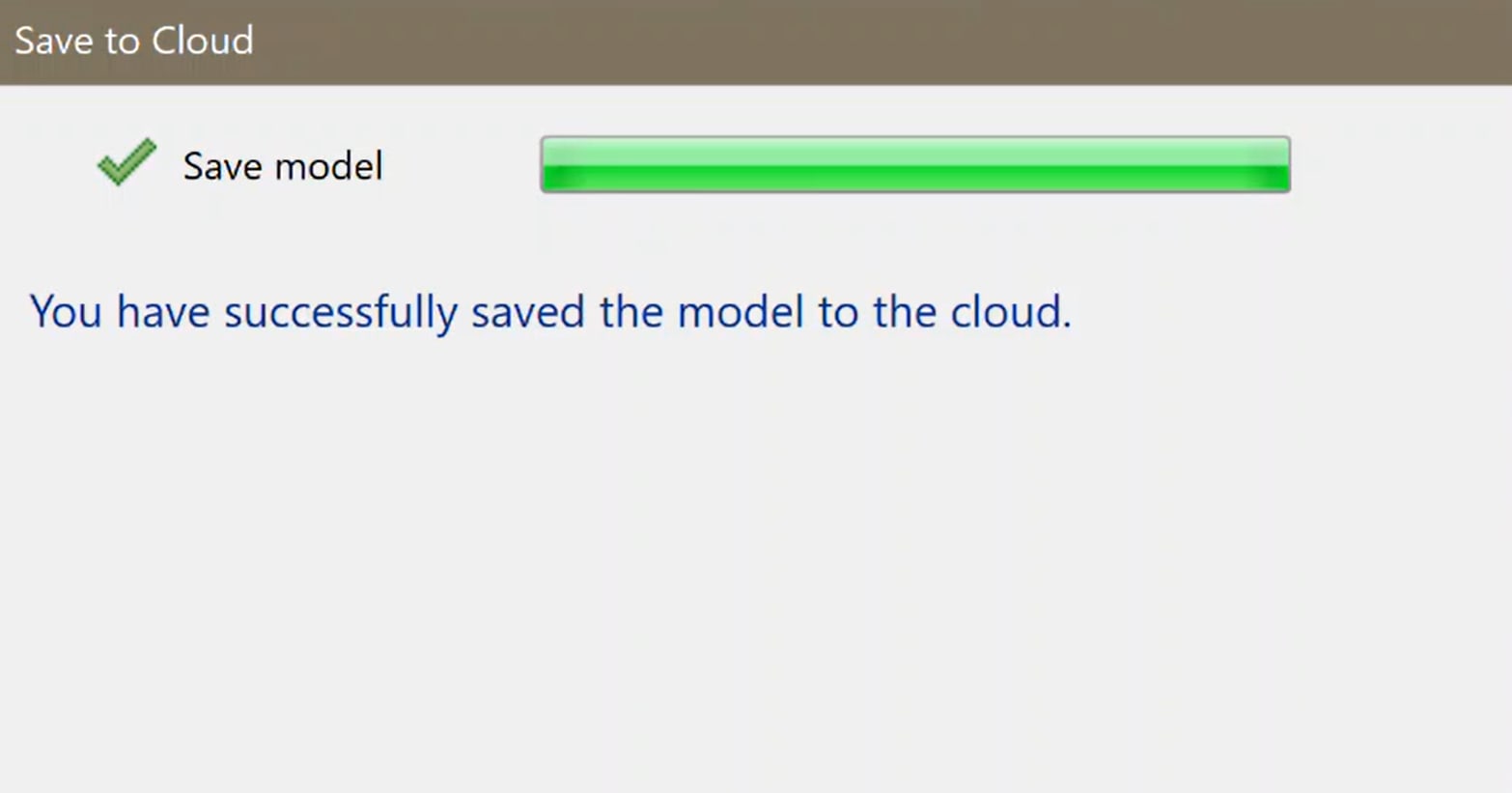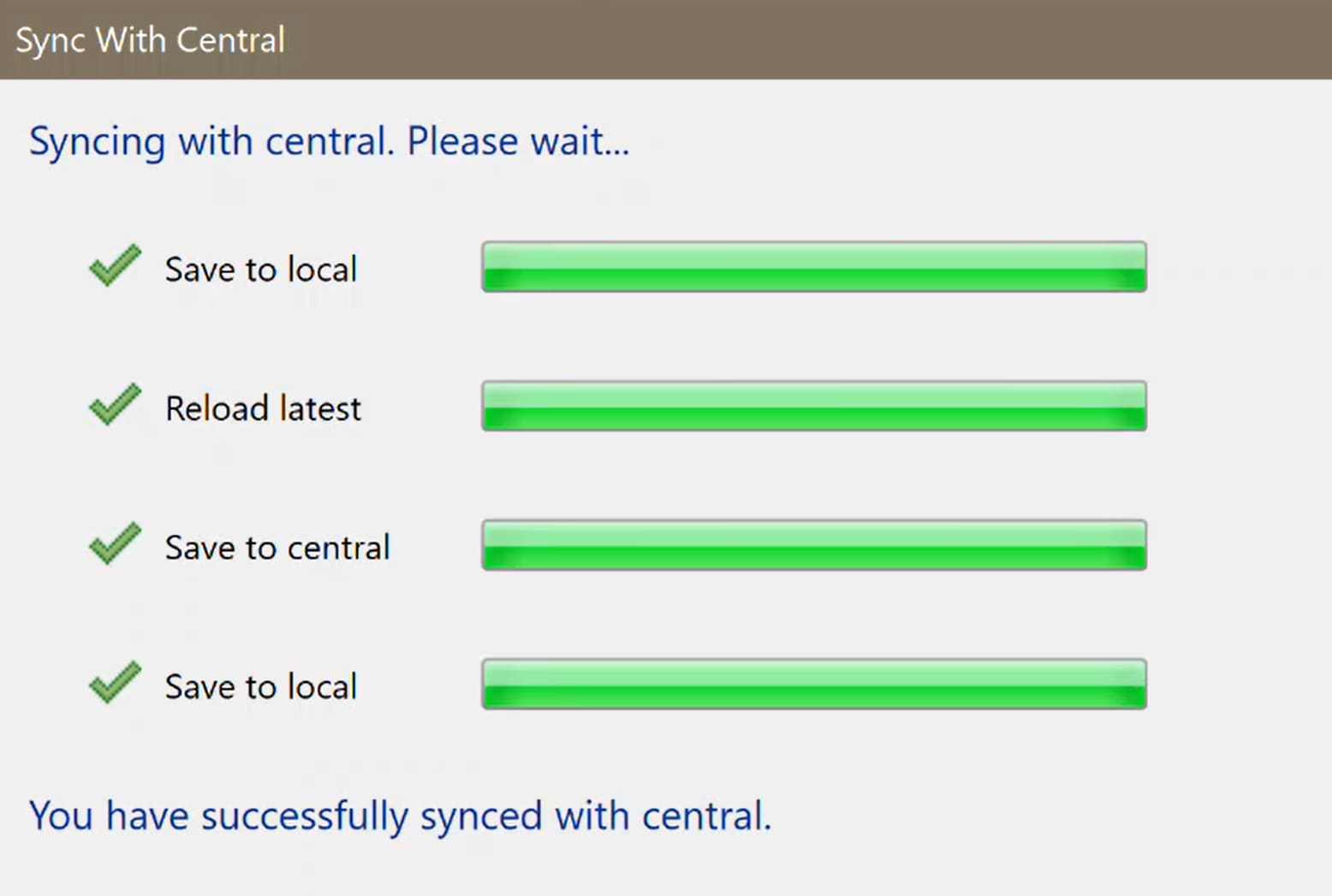Question:
There are often a lot of questions about the difference between syncing and publishing in Revit, and sometimes you may wonder why your model in BIM 360 is not changing even after syncing in Revit. Here is a simple explanation for all that.
Answer:
To grasp all of the explanations that will follow, you have to understand where and how Revit Cloud models are stored. Following the initial upload, a Revit cloud model is saved in 3 separate locations:
-
-
-
- The Revit Cloud Worksharing/Cloud models server,
- Autodesk Docs (BIM 360/ACC) server,
- The Local collaboration cache.
-
-
- The Revit Cloud Worksharing/Cloud models server – When you save/sync a Revit model to Cloud, a copy of the model is uploaded and stored in the Revit Cloud Worksharing (RCW) Server, which is visible only from Revit. This data is stored in the form of element streams and can be opened only from Revit software. This is the copy you can view as well as modify in Revit and is updated each time you sync to cloud. This is also the copy regarded to as the ‘Live model.’
- Autodesk Docs (BIM 360/ACC) – The first time you save a Revit model to cloud, a copy of the model is stored on Autodesk Docs server, this is different from the one you see in Revit, and it is only accessible from the BIM 360/ACC interface on a web browser. Models in BIM 360/ACC cannot be opened from Revit and so can’t be modified or updated. The most recent version of the Revit model in RCW will be copied to BIM 360/ACC each time you use the ‘publish latest’ command in Revit. This doesn’t overwrite the older version of the model in BIM 360/ACC, instead it is saved as a new version.
-
-
- Note: The Desktop Connector mirrors the content of Autodesk Docs (BIM 360/ACC) servers to the Autodesk Docs drive on the desktop. Data in the Revit Cloud Worksharing (RCW) Server is not visible and can’t be accessed through the Desktop Connector.
-
-
- The Local collaboration cache – A copy of your Revit Cloud model can be found in a temporary holding location on your local hard drive, often located in
%userprofile%\AppData\Local\Autodesk\Revit\<Autodesk Revit Version>\CollaborationCache.This copy is created/updated each time you save or open a cloud model in Revit. During worksharing, all of your unsynced changes are saved there.-
-
- Note: Unless it is for troubleshooting purposes (e.g. file recovery), it is not advisable to access the model from this location.
-
-
Now that the basics have been established, here’s what happens when you save, sync or publish a Revit cloud model.
|
Non-Workshared Model |
Workshared Model |
|
|
Save |
Uploads and saves progress to Revit Cloud Worksharing/Cloud models (RCW) server. |
Saves progress to local copy in the Collaboration cache. |
|
Sync |
Not applicable |
Saves progress to the local copy in the Collaboration cache. Checks the RCW server for any changes made by other team members, then downloads and appends the changes to your local copy in the collaboration cache. Uploads and saves the local copy to Revit Cloud Worksharing/Cloud models (RCW) server. Re-saves the Revit file to local, to ensure that your local copy in the collaboration cache remains in sync with the copy in The RCW server. |
|
Publish |
Copies the latest version of the model from Revit Cloud Worksharing/Cloud models (RCW) server to BIM 360/ACC (Autodesk Docs) Server. |
Copies the latest version of the model from Revit Cloud Worksharing/Cloud models (RCW) server to BIM 360/ACC (Autodesk Docs) Server. |
In summary:
Non-workshared models are uploaded to the Revit Cloud Worksharing (RCW) Server, as soon as you hit the ‘save’ button in Revit. ‘Sync’ does not apply to non-workshared models.

Workshared models update only the local copy (in the collaboration cache) when you hit the ‘save’ button in Revit.
When you synchronize, Revit first saves your changes to the local copy in the collaboration cache, then checks Revit Cloud Worksharing (RCW) Server to see if any of your teammates have made changes to the central model (Reload latest).
If changes are found, Revit will download these changes and append them to your local copy in the collaboration cache, before uploading all your changes to the Revit Cloud Worksharing Server (Save to central).
To complete the sync process, Revit will re-save the current state of the model in the Revit Cloud Worksharing (RCW) Server, to your local collaboration cache to ensure that they both remain in sync.

Publishing is the same for both workshared and non-workshared models;
In simple terms, publishing is the process of copying the latest version of a model from the Revit Cloud Worksharing (RCW) server to Autodesk Docs (BIM 360/ACC) server.
In details, the elements streams which make up the Revit model data, are transferred from the Revit Cloud Worksharing (RCW) server to the BIM 360/ACC Docs server which begins the process of translating the chunks of data into an actual .rvt file which can be viewed and downloaded from the BIM 360/ACC interface on mobile/web browser.
Differences between the Revit model in Revit Cloud Worksharing/Cloud models server (aka ‘live model’) and the model that has been published to Autodesk Docs (BIM 360/ACC) server.
|
Revit Cloud Worksharing/Cloud models server |
Autodesk Docs (BIM 360/ACC) server |
|
|---|---|---|
|
Storage format |
Stored as a group of binary data (Element Streams). |
Stored in the .rvt file format |
|
Access |
Can only be opened from a Revit software. |
Can be opened from Document Management in BIM 360/ACC interface on a mobile/web browser, and also from drives connected through the Autodesk Desktop Connector. |
|
Editing |
Can be modified and updated in Revit. |
Cannot be modified or updated. |
|
Versioning |
Each save/sync creates a new version, labelled numerically. |
Each publish creates a new incremental version, labelled alphanumerically. |
|
Download |
Cannot be downloaded. (Note however, a temporary copy is often saved to the local collaboration cache during open/save operations in Revit). |
Can be downloaded from the BIM 360/ACC interface on a mobile/web browser, or connected drives. |
|
Linking |
Regarded as the ‘live state’ of the model, it is linked into a Revit model through External resources. |
Can be linked into a Revit model through Desktop Connector drives. |
Please note that the model visible from Revit, and the published versions in the Autodesk Docs (BIM 360/ACC) still share connections to each other, and so certain changes made from document management in BIM 360/ACC will immediately be reflected in the Revit home screen.
The changes include renaming, moving and deleting.
-
-
- Renaming a model in document management in BIM 360/ACC, will update the name of the model on the Revit home screen.
- Moving a Revit file to a different folder in document management in BIM 360/ACC will update its location on Revit home screen.
- Deleting a Revit file from document management in BIM 360/ACC will also delete it from the Revit Cloud Worksharing/Cloud models server and it will no longer be available from Revit.
-


















